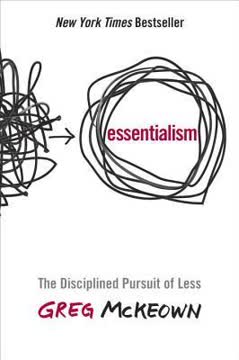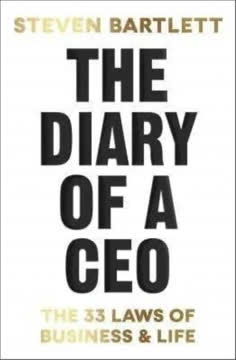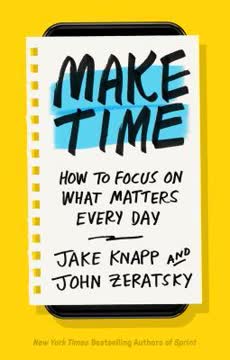Key Takeaways
1. Distraction is rooted in discomfort, not technology
Time management is pain management.
Psychological discomfort drives distraction. Our brains are wired to seek relief from unpleasant emotions and experiences. This evolutionary trait, while once crucial for survival, now often leads us to escape into distractions. Technology is not the root cause of our distraction; rather, it's a convenient tool we use to alleviate discomfort.
Understanding the true source is key. By recognizing that distraction stems from our internal state, we can begin to address the underlying issues. This shift in perspective allows us to move beyond blaming external factors and take responsibility for our attention. Factors contributing to our discomfort include:
- Boredom
- Negativity bias
- Rumination
- Hedonic adaptation
2. Master internal triggers to regain control
We can't control the feelings and thoughts that pop into our heads, but we can control what we do with them.
Awareness is the first step. Recognizing and acknowledging our internal triggers allows us to respond intentionally rather than react impulsively. This process involves:
- Identifying the emotion preceding the distraction
- Writing down the internal trigger
- Exploring the negative sensation with curiosity
Reimagine the trigger, task, and temperament. Instead of trying to suppress urges, which often backfires, we can:
- Reimagine the trigger: Reframe the discomfort as a growth opportunity
- Reimagine the task: Find novelty and challenge in seemingly mundane activities
- Reimagine your temperament: Adopt a growth mindset about willpower and self-control
3. Make time for traction through intentional scheduling
You can't call something a distraction unless you know what it's distracting you from.
Define your values and priorities. Traction is any action that moves you closer to your goals and values. By clearly defining what's important to you, you create a framework for decision-making and time allocation.
Use timeboxing to schedule your day. This technique involves:
- Creating a template for your ideal week
- Scheduling time for yourself, relationships, and work
- Eliminating white space in your calendar
- Syncing your schedule with stakeholders
By proactively planning your time, you ensure that your actions align with your intentions and reduce the likelihood of falling into distraction.
4. Hack back external triggers to minimize interruptions
Is this trigger serving me, or am I serving it?
Identify and eliminate unhelpful triggers. External triggers are cues in our environment that prompt us to action. While some are beneficial, many lead to distraction. Assess each trigger by asking if it's serving your goals or pulling you away from them.
Implement strategies to manage common distractions:
- Email: Batch processing, using the "two-touch" rule
- Meetings: Require agendas, implement device-free policies
- Group chat: Set expectations for response times, use status indicators
- Smartphone: Remove non-essential apps, adjust notification settings
- Desktop: Clear visual clutter, use website blockers during focused work
By taking control of your environment, you create space for sustained attention and productivity.
5. Use precommitments to prevent distraction
The antidote to impulsiveness is forethought.
Leverage the power of precommitments. These are decisions made in advance to limit our future behaviors. By creating barriers to distraction before we're tempted, we increase our chances of staying focused.
Types of precommitments:
-
Effort pacts: Make unwanted behaviors more difficult
- Example: Using website blockers during work hours
-
Price pacts: Attach a monetary cost to distraction
- Example: Committing to donate money if you miss a deadline
-
Identity pacts: Align behaviors with your self-image
- Example: Defining yourself as an "indistractable" person
By utilizing these strategies, you create a support system that reinforces your commitment to focused work and intentional living.
6. Create an indistractable workplace culture
Distraction is a sign of dysfunction.
Address the root causes of workplace distraction. A culture of constant connectivity often stems from deeper issues such as lack of psychological safety, unclear expectations, or poor communication.
Foster an environment that supports focus:
- Encourage open dialogue about workload and priorities
- Implement regular "focus time" for deep work
- Model healthy boundaries around technology use
- Create clear guidelines for communication and responsiveness
By tackling the underlying cultural issues, organizations can create a more productive and satisfying work environment that supports employees' well-being and effectiveness.
7. Raise indistractable children by addressing psychological needs
Kids need psychological nutrients.
Understand the driving forces behind children's behavior. According to self-determination theory, all people need three things to thrive:
- Autonomy: Sense of control over their choices
- Competence: Feeling of mastery and growth
- Relatedness: Connection to others and sense of belonging
Provide alternatives to digital distractions:
- Allow children to make choices about their time and activities
- Create opportunities for skill development and achievement
- Prioritize face-to-face social interactions and unstructured play
By addressing these fundamental needs, parents can help children develop healthier relationships with technology and improve their ability to focus.
8. Foster indistractable relationships through mutual understanding
Distraction in social situations can keep us from being fully present with important people in our lives.
Develop social norms around technology use. Just as society developed "social antibodies" to combat issues like public smoking, we can create new norms to address digital distractions in social settings.
Strategies for indistractable relationships:
- Establish device-free zones or times (e.g., during meals)
- Use gentle reminders to redirect attention (e.g., "Is everything okay?" when someone checks their phone)
- Model the behavior you want to see in others
- Have open conversations about expectations and boundaries
By collectively addressing the issue of distraction, we can create stronger, more meaningful connections with the people in our lives.
Last updated:
FAQ
What's "Indistractable: How to Control Your Attention and Choose Your Life" about?
- Focus on Distraction: "Indistractable" by Nir Eyal explores the concept of distraction and how it affects our ability to focus on what truly matters in our lives.
- Four-Part Model: The book introduces a four-part model to help readers become indistractable, which includes mastering internal triggers, making time for traction, hacking back external triggers, and preventing distraction with pacts.
- Practical Strategies: It provides practical strategies and techniques to manage both internal and external distractions, allowing individuals to regain control over their attention and time.
- Application Across Life Domains: The book applies these strategies across various life domains, including personal well-being, relationships, work, and parenting.
Why should I read "Indistractable"?
- Improve Productivity: The book offers insights and tools to enhance productivity by minimizing distractions and focusing on important tasks.
- Enhance Relationships: It provides guidance on how to be more present in personal relationships by reducing digital distractions.
- Empowerment: Readers learn to take control of their time and attention, leading to a more fulfilling and intentional life.
- Adaptability: The strategies are adaptable to various aspects of life, making them applicable to both personal and professional settings.
What are the key takeaways of "Indistractable"?
- Distraction is Manageable: Distraction is not inevitable; it can be managed by understanding and addressing its root causes.
- Timeboxing: Scheduling time for specific tasks helps differentiate between traction (actions that move you toward your goals) and distraction.
- Precommitments: Making precommitments can help prevent impulsive behaviors that lead to distraction.
- Psychological Needs: Understanding and fulfilling psychological needs like autonomy, competence, and relatedness can reduce the urge to seek distractions.
How does the Indistractable Model work?
- Master Internal Triggers: Identify and manage the internal triggers that lead to distraction by understanding the discomfort they cause.
- Make Time for Traction: Use timeboxing to schedule tasks and ensure that your time aligns with your values and goals.
- Hack Back External Triggers: Identify and eliminate external triggers that do not serve your goals, such as unnecessary notifications.
- Prevent Distraction with Pacts: Use effort, price, and identity pacts to commit to staying focused and avoiding distractions.
What are some practical strategies from "Indistractable"?
- Ten-Minute Rule: Delay giving in to distractions by waiting ten minutes, allowing the urge to pass.
- Effort Pacts: Increase the effort required to engage in distracting behaviors, such as using apps that block certain websites.
- Identity Pacts: Adopt an identity that aligns with being indistractable, reinforcing behaviors that support focus.
- Schedule Syncing: Regularly align your schedule with stakeholders at work to ensure time is spent on priority tasks.
How does "Indistractable" address workplace distractions?
- Psychological Safety: Creating a work environment with psychological safety encourages open discussions about distractions and solutions.
- Regular Meetings: Implement regular meetings to address and solve issues related to distraction and workload.
- Cultural Change: Encourage a culture that values focused work and respects boundaries, such as not sending emails after hours.
- Leadership Example: Leaders should model indistractable behaviors, such as scheduling uninterrupted work time.
How can parents use "Indistractable" to help their children?
- Understand Internal Triggers: Recognize the psychological needs driving children's use of technology, such as autonomy and relatedness.
- Timeboxing for Kids: Teach children to create schedules that balance online and offline activities.
- External Triggers Management: Help children manage external triggers by setting boundaries on device usage.
- Empowerment: Involve children in setting their own rules for technology use, fostering self-regulation.
What are the best quotes from "Indistractable" and what do they mean?
- "The antidote to impulsiveness is forethought." This quote emphasizes the importance of planning ahead to prevent distractions.
- "You can’t call something a distraction unless you know what it is distracting you from." It highlights the need to have clear goals and priorities to identify distractions.
- "Being indistractable means striving to do what you say you will do." This underscores the commitment to align actions with intentions and values.
- "Distraction is a problem like any other." It suggests that distraction can be managed with the right strategies and mindset.
How does "Indistractable" suggest handling digital distractions?
- Remove Unnecessary Apps: Delete apps that do not align with your values or goals.
- Rearrange Home Screen: Organize your phone to display only essential apps, reducing the temptation to check distracting ones.
- Use Technology Wisely: Employ apps and tools that help block distractions, such as website blockers or focus timers.
- Set Boundaries: Use features like Do Not Disturb to limit notifications during focused work times.
What role do psychological needs play in "Indistractable"?
- Autonomy: The need for control over one's actions and decisions; lack of autonomy can lead to seeking distractions.
- Competence: The need to feel capable and effective; when unmet, individuals may turn to distractions for a sense of achievement.
- Relatedness: The need for connection with others; social media and online interactions can fulfill this need if not met offline.
- Balance: Meeting these needs in healthy ways can reduce the reliance on distractions for psychological fulfillment.
How can "Indistractable" improve personal relationships?
- Be Present: Reduce digital distractions to be more present and engaged with loved ones.
- Scheduled Quality Time: Timebox activities with family and friends to ensure meaningful interactions.
- Model Behavior: Demonstrate indistractable behaviors to encourage similar habits in others.
- Open Communication: Discuss and agree on boundaries for device use during shared time.
How does "Indistractable" redefine productivity?
- Focus on Inputs: Concentrate on the time and effort put into tasks rather than just outcomes.
- Eliminate Pseudowork: Identify and reduce tasks that appear productive but do not contribute to goals.
- Align with Values: Ensure that daily activities reflect personal and professional values.
- Continuous Improvement: Regularly review and adjust schedules to optimize productivity and focus.
Review Summary
Indistractable receives mixed reviews, with praise for its practical tips on managing distractions and improving focus. Readers appreciate the book's relatable content and actionable advice, particularly regarding technology use and time management. However, some critics find it repetitive, lacking depth, or overly simplistic. The book's discussions on workplace productivity, relationships, and parenting are highlighted as valuable. While some readers find the content life-changing, others suggest it could have been condensed into a shorter format. Overall, the book is seen as a helpful guide for those seeking to regain control over their attention in a distracting world.
Similar Books










Download PDF
Download EPUB
.epub digital book format is ideal for reading ebooks on phones, tablets, and e-readers.





